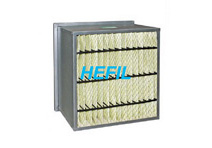Cleanroom are facilities designed for conducting research or manufacturing products that require extremely clean environments. Cleanroom air shower is one type of cleanroom air filters. In general, cleanrooms prevent air particles, bacteria, and other contaminants from entering the workspace by a broad range of techniques. Air filter system can keep a cleanroom particle free. Cleanrooms employ many different types of filters, including HEPA filters and ULPA filters. If you want to use cleanroom air filters, you have to its principle firstly. Here is brief introduction about cleanroom air filters working principle.
At first glance you would think that HEPA filter media composed of an extremely large number of randomly oriented micro-fibers would not filter small air dust. Actually, HEPA media is approximately 92% air and functions according to some fairly complex mechanical principles and a combination of filtration mechanisms which makes the media extremely effective on sub-micron particles. Now let’s see the steps of cleanroom air filters working principle.
The first step is straining also called Sieving when particles are larger than the clearance between the fibers. The particles can’t pass through the opening and are collected on the Filter media. Then the second step which is called inertial Impingement is also refers to as Impaction, relies on air flow velocity and particle weight to cause particles to leave the airstream and impinge (or impact) the fiber directly. Interception occurs when particles small enough to follow the airstream around the fiber but are intercepted by the fiber due to the dimension of the particle radii being larger than the distance between the fiber and airstream path the particle is following. The particle is held to the fiber by a molecular surface attraction known as Van der Waals' Forces. The last step is called diffusion or super Interception, occurs on sub-micron particles which have sufficiently low mass so that air molecules, which are continually in motion and bombarding the particles, cause the particle to travel in an erratic path. This motion increases the chance of the particle coming in contact with the fiber. The smaller the particle is, the stronger the effect does. In the sequence listed above, the mechanisms are increasingly important for decreasing particle sizes. The most critical progress lies between interception and diffusion. One can conceive of particles small enough to follow the airstream around the fibers and yet have enough mass that the molecular bombardment or "Brownian movement" have but a slight effect.
This is the Cleanroom air filters working principle. Anyway knowing the cleanroom air filters working principles is the first step to use cleaning room air filters.





